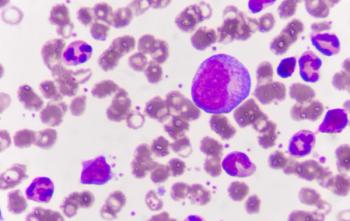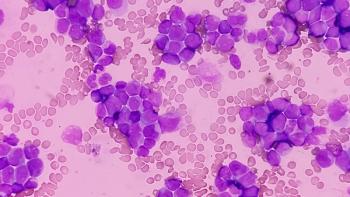
SUD, Remote Monitoring Appear Feasible for Outpatient BiTE in MM
Step-up dosing with remote monitoring resulted in 47% of patients receiving bispecific antibodies remaining outpatient, even in cases of CRS.
Standard step-up dosing (SUD) paired with remote monitoring and premedication appeared effective in reducing hospital admissions for patients with relapsed or refractory multiple myeloma receiving bispecific antibodies, even for some patients experiencing cytokine release syndrome (CRS), according to findings from a single-center study.1
Of 34 patients for whom outpatient step-up dosing was initiated, 16 (47%) remained outpatient throughout the step-up dosing period, per the report published in JCO Oncology Practice. Half of those receiving outpatient step-up dosing were given teclistamab (Tecvayli; n = 17) and half talquetamab (Talvey; n = 17). An additional 4 patients received step-up dosing inpatient due to a lack of a full-time caregiver at home.
All patients receiving outpatient care were given an at-home monitoring kit to collect vitals and were surveilled by a remote patient monitoring team of nurses. A 24-hour caregiver and remote patient monitoring provider were required for patients within the first 48 hours of a patient’s first full treatment dose, barring complications.
CRS, ICANS, and Other Reasons for Hospitalization
On the whole, 17 patients (94%) who were hospitalized during step-up dosing and 7 (44%) who remained outpatient, along with all 4 patients (100%) who were treated inpatient, had
Ten patients receiving teclistamab were hospitalized during treatment, including 3 who required readmission during step-up dosing. Patients in the teclistamab group were hospitalized due to grade 2 CRS (n = 4), refractory CRS (n = 1), grade 1 ICANS (n = 2), infection (n = 1), atrial fibrillation (n = 1), heart failure (n = 1), gastrointestinal bleed (n = 1), pain crisis (n = 1), loss of caregiver (n = 1), and planned admission for comorbidities or previous CRS (n = 3).
In the teclistamab group, 2 patients have CRS not requiring hospitalization, including 1 patient who had 2 occurrences of CRS. All 4 patients with grade 2 CRS were hospitalized and given steroids, and 3 were given tocilizumab (Actemra) to manage persistent fever. For 2 patients, grade 2 CRS was concurrent with grade 1 ICANS. One patient received methylprednisolone and anakinra for grade 1 ICANS.
In the
Hospitalization was not required for 5 patients who had CRS in patients receiving talquetamab, including 3 who had multiple episodes of CRS. Two patients had grade 1 ICANS, and in both cases, it occurred alongside grade 2 CRS.
Infections were reported in 5 patients on each treatment. CRS was managed with steroids, acetaminophen, and tocilizumab. The majority of tocilizumab doses (n = 12) were given inpatient, and 3 were given outpatient.
Overall Medical Encounters
Among patients receiving outpatient step-up dosing, 317 total medical encounters occurred, 72% of which were planned in-person assessments, including provider assessments, labs, and/or step-up dose administration. An additional 4% were unplanned visits for symptom assessment, and 20% were phone visits with a remote patient monitoring nurse or provider precluding in-person assessment. Three patients visited the emergency department for complications related to treatment.
All patients who had delays in step-up dosing (n = 12) or repeat doses (n = 3) were hospitalized. Most delays in step-up dosing were due to CRS, with the exception of one patient who had elevated C-reactive protein.
Step-Up Dosing Schema and Premedication
Standard step-up dosing for talquetamab was considered biweekly dosing, with step-up dosing on days 1, 3, 5, and 7. The standard for
Patients were premedicated with 16 mg of dexamethasone once before each step-up dose and first full dose, along with 25 to 50 mg of diphenhydramine, and 650 mg of acetaminophen.
Baseline Patient Characteristics Associated With Hospitalization
Patients had a median of 6 lines of therapy prior to treatment on this trial. Those who had received prior
Additionally, higher levels of hemoglobin (P = .02) and creatinine clearance (P = .016) along with lower levels of ferritin at baseline were associated with greater success remaining outpatient: The median levels were 11.1 g/dL, 71 mL/min, and 193 mcg/L, respectively, in the outpatient group, compared with 8.5 g/dL, 43 mL/min, 1171 mcg/L, respectively, in the patients for whom hospitalization was necessary.
Reference
Puttkammer JR, Barreto JN, Jensen CJ, et al. Outpatient management of bispecific related toxicities: an observational study of safety outcomes and resource utilization. JCO Oncol Pract. Published online April 15, 2025. doi:10.1200/OP-24-00930
Newsletter
Knowledge is power. Don’t miss the most recent breakthroughs in cancer care.
















































































